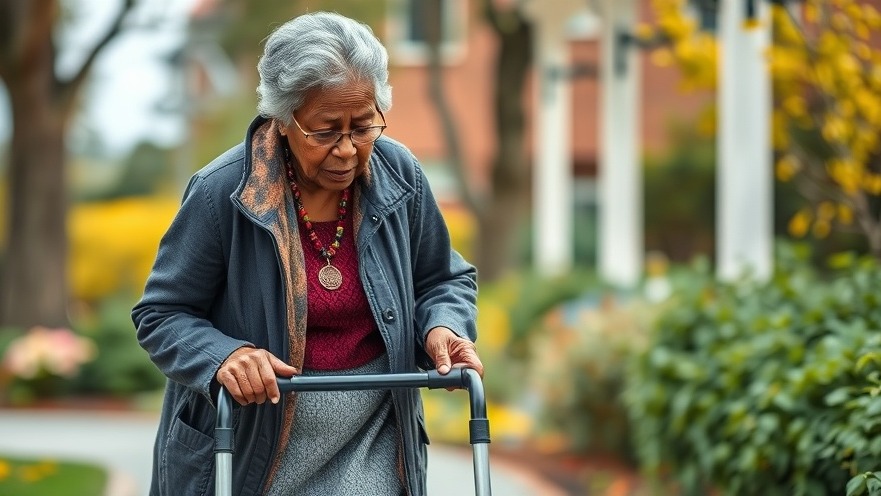
Understanding the Risks: Why Falls Are a Major Concern
As our loved ones age, fall prevention becomes a crucial topic. According to research, one-third of individuals over 65 experience falls each year, with many sustaining serious injuries such as hip fractures. The risks of falling emphasize the importance of proactive measures in the lives of older adults, especially those with reduced mobility or pre-existing health conditions.
Physical Activity: The Key to Fall Prevention
Research consistently shows that higher levels of physical activity significantly reduce the risk of falls. Surprisingly, many may think that reduced activity could prevent falls, but inactivity actually increases the likelihood of falling. Activities such as walking, balance exercises, and strength training can help maintain muscle strength and coordination. Encouraging older adults to remain active, even in simple ways like stretching or gentle yoga at home, can greatly enhance their overall well-being.
The Sedentary Dilemma: How Inactivity Can Lead to Falls
While our instinct might be to protect our aging parents by limiting their activities, research suggests that extensive sedentary behavior can lead to weakness and instability. What might seem like a safe choice—sitting while watching TV or spending hours on a computer—can have adverse effects. By adopting a more active lifestyle, we can help our loved ones maintain their physical function and reduce their fall risks. Simple changes such as using a standing desk or setting reminders to get up and move can make a significant difference.
The Importance of Monitoring Movements
In a groundbreaking study published in the Journal of the American Geriatrics Society, researchers positioned wearable devices to track both physical activity and sedentary behaviors in postmenopausal women aged 50 to 79. Over 7,000 participants wore these accelerometers for a week, enabling researchers to gain deeper insights into the relationship between activity levels and falling incidents. Understanding these dynamics can help caregivers encourage better habits.
Simple Ways to Foster Physical Activity Among Older Adults
1. **Create a Routine**: Encourage your loved ones to engage in daily exercise for at least 30 minutes, whether it's walking, gardening, or even stretching.
2. **Join Them**: Make it a bonding experience. Exercising together can motivate them to stay active while enjoying your company.
3. **Utilize Technology**: Introduce them to mobile apps that promote physical activity, set reminders, and track progress, making exercise engaging.
Future Predictions: An Active Older Generation
As the population ages, we are likely to see a greater emphasis on the need for preventive healthcare measures focused on physical activities. By promoting active lifestyles now, caregivers and families can help ensure that the next generation of older adults leads healthier, more independent lives. Research will likely continue to show that both the quantity and quality of movement play crucial roles in fall prevention.
What Can You Do Today?
Aging is a natural process, but allowing our parents to move less is not inevitable. As you navigate the challenges of caregiving, remember that promoting an active lifestyle is one of the most impactful decisions you can make. Whether it's a daily stroll, a weekly visit to a local senior center, or simply encouraging small movements around the house, each step counts towards reducing the risk of falls.
Conclusion: Take Action Against Falls
By understanding the risks associated with falls and encouraging physical activity, we can make strides in keeping our loved ones safe and healthy. Regular movement enhances not only physical health but also emotional well-being. To protect those dear to you, make it a priority to incorporate physical activity into their lives. Let’s share the journey, laugh together, and keep our parents moving confidently and safely as they age.
 Add Row
Add Row  Add
Add 




Write A Comment